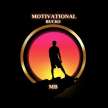The Mistake Smart People Make: Being In Motion vs. Taking Action
Motion vs. Taking Action

The Mistake Smart People Make: Being In Motion vs. Taking Action
The distinction between being in motion and taking action is an important concept highlighted by author and entrepreneur James Clear in his book "Atomic Habits." Clear explains that many smart and capable individuals often fall into the trap of mistaking motion for action, which can hinder their progress. Here's a breakdown of the difference between the two:
1. Motion:
Motion refers to the act of planning, researching, strategizing, and gathering information. It involves preparing and learning about a task or goal without actually taking direct action towards achieving it. Motion feels productive because it gives the illusion of progress, but in reality, it keeps you in a continuous state of preparation without moving forward.
Examples of motion: Reading books and articles about productivity, taking online courses to learn new skills, attending seminars and conferences, brainstorming ideas, and creating to-do lists.
2. Action:
Action, on the other hand, is the step where you physically execute and implement your plans. It involves taking concrete steps towards your goal and making progress. Action requires effort, commitment, and facing the possibility of failure, but it is essential for achieving real results.
Examples of action: Writing a chapter of your book, making sales calls, exercising, coding a website, sending out job applications, or creating content for your blog.
The problem arises when people spend excessive time in motion without transitioning to action. While motion has its place in the initial stages of planning and gathering knowledge, it becomes counterproductive if it becomes a habit of avoiding the risk and discomfort associated with taking action.
To avoid falling into this trap, it's important to recognize when you're stuck in a pattern of motion and actively work towards transitioning to action:
1. Set Clear Deadlines:
Establish specific deadlines for when you will transition from motion to action. This helps create a sense of urgency and accountability.
2. Break Tasks Down:
Break your goals into smaller, manageable tasks. This makes it easier to take action, as the steps become less overwhelming and more achievable.
3. Embrace Imperfection:
Understand that taking action involves accepting the possibility of failure or making mistakes. Embrace the learning process and be willing to iterate and adjust your approach along the way.
4. Measure Progress:
Keep track of your progress to ensure you're moving forward. Regularly assess and evaluate the results you're achieving and adjust your actions accordingly.
5. Seek Accountability and Support:
Share your goals and action plans with someone who can hold you accountable or provide support and encouragement. This can be a friend, colleague, mentor, or coach.
Embrace Imperfection:
Perfectionism often leads to excessive motion without action. Smart people sometimes fall into the trap of waiting for the perfect moment or striving for flawless execution before taking action. Embrace the concept of "good enough" and recognize that taking imperfect action is often better than waiting for perfection.
Set Clear Goals:
Clearly define your goals and break them down into actionable steps. This clarity helps you identify the specific tasks that contribute directly to your objectives. By focusing on these tasks, you can move from motion to action.
Prioritize Impactful Tasks:
Identify the tasks that have the most impact on your goals and prioritize them.
Emphasize Execution:
Develop a bias towards action. Once you have a plan in place and understand the necessary steps, take immediate action. Procrastination and over thinking can keep you stuck in motion. Challenge yourself to take consistent, purposeful steps towards your goals.
Remember, taking action is what ultimately leads to results and progress. While motion can provide valuable insights and knowledge, it's crucial to bridge the gap between planning and execution by consistently taking intentional steps towards your goals.
About the Creator
Motivational Bucks
Global Digital Content Creator






Comments
There are no comments for this story
Be the first to respond and start the conversation.